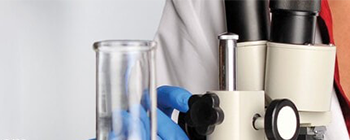Learn More
Lead(IV) acetate, 96% (dry wt.), stab. with 5-10% glacial acetic acid, Thermo Scientific Chemicals
Supplier: Thermo Scientific Chemicals A1555130
Description
Lead(IV) acetate is an important oxidizing agent and a source of acetyloxy group used in organic synthesis. For example, 1,4-dioxene is prepared from dioxane involving 2-acetoxy-1,4-dioxane as an intermediate. Similarly, it is used for the preparation of bis(trifluoromethyl)diazomethane from hexafluoroacetone hydrazone. It also reacts with alkenes, alcohols having a delta-proton and di-n-butyl d-tartrate to get gamma-lactones, cyclic ethers and n-butyl glyoxylate respectively. It induces the cleavage of 1,2-diols to the corresponding aldehydes or ketones. It is actively involved in the Kochi reaction for the decarboxylation of carboxylic acids to alkyl halides and used as an alternative reagent to bromine in the Hofmann rearrangement.
This Thermo Scientific Chemicals brand product was originally part of the Alfa Aesar product portfolio. Some documentation and label information may refer to the legacy brand. The original Alfa Aesar product / item code or SKU reference has not changed as a part of the brand transition to Thermo Scientific Chemicals.
ApplicationsLead(IV) acetate is an important oxidizing agent and a source of acetyloxy group used in organic synthesis. For example, 1,4-dioxene is prepared from dioxane involving 2-acetoxy-1,4-dioxane as an intermediate. Similarly, it is used for the preparation of bis(trifluoromethyl)diazomethane from hexafluoroacetone hydrazone. It also reacts with alkenes, alcohols having a delta-proton and di-n-butyl d-tartrate to get gamma-lactones, cyclic ethers and n-butyl glyoxylate respectively. It induces the cleavage of 1,2-diols to the corresponding aldehydes or ketones. It is actively involved in the Kochi reaction for the decarboxylation of carboxylic acids to alkyl halides and used as an alternative reagent to bromine in the Hofmann rearrangement.
Solubility
Soluble in water, ethanol, chloroform, benzene, nitrobenzene, tetrachloroethane, nitric acid, hot acetic acid and hydrochloric acid.
Notes
Air and moisture sensitive. Store in cool place. Keep the container tightly closed in a dry and well-ventilated place. Incompatible with alcohols, strong acids and strong reducing agents.
Specifications
| Lead(IV) acetate | |
| 546-67-8 | |
| 2.28 | |
| C8H16O8Pb | |
| MFCD00008693 | |
| UN1616 | |
| Moisture sensitive | |
| lead iv acetate | |
| NVTAREBLATURGT-UHFFFAOYSA-N | |
| acetic acid;lead | |
| 50931538 | |
| 96% |
| stabilized with 5 to 10% glacial acetic acid | |
| 175°C | |
| (dry wt.) | |
| Pb(OOCCH3)4 | |
| 250 g | |
| 3595640 | |
| 14,5423 | |
| Soluble in water,ethanol,chloroform,benzene,nitrobenzene,tetrachloroethane,nitric acid,hot acetic acid and hydrochloric acid. | |
| CC(=O)O.CC(=O)O.CC(=O)O.CC(=O)O.[Pb] | |
| 447.408 | |
| 443.37 |
Chemical Identifiers
| 546-67-8 | |
| 447.408 | |
| NVTAREBLATURGT-UHFFFAOYSA-N | |
| 50931538 | |
| CC(=O)O.CC(=O)O.CC(=O)O.CC(=O)O.[Pb] |
| C8H16O8Pb | |
| MFCD00008693 | |
| lead iv acetate | |
| acetic acid;lead |
Safety and Handling
GHS H Statement
H360-H373-H302-H332-H201
May damage fertility or the unborn child.
May cause damage to organs through prolonged or repeated exposure.
Harmful if swallowed.
Harmful if inhaled.
Explosive; mass explosion hazard.
P201-P202-P260-P264b-P270-P271-P281-P303+P361+P353-P304+P340-P305+P351+P338-P310-P330-P331-P363-P501c
H302+H332-H314-H335-H350-H360Df-H373
DOTInformation : Transport Hazard Class: 6.1; Packing Group: III; Proper Shipping Name: LEAD ACETATE
EINECSNumber : 208-908-0
RTECSNumber : AI5300000
TSCA : Yes
Recommended Storage : Ambient temperatures; Store under Nitrogen
RUO – Research Use Only




